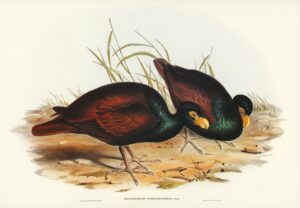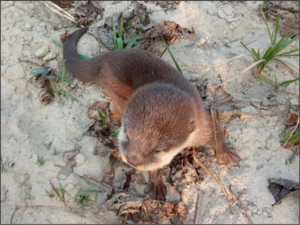When you hear “terror beasts,” you might not imagine a worm. An extinct ocean predator, fossils of this ancient worm species were discovered in sedimentary deposits at the Sirius Passet site in North Greenland.
The worms were abundant around 520 million years ago and remained one of the top predators for 10-15 million years. Scientists have named the worms Timorebestia, which is Latin for “terror beasts.”
Giants of their day
“Timorebestia were giants of their day and would have been close to the top of the food chain,” said Jakob Vinther, an author of the study.
At the time, they would have been some of the largest organisms in the sea and one of the earliest carnivorous animals on Earth. They are the ancient equivalent of sharks and whales today.
“Timorebestia is a relative of living arrow worms. These are much smaller ocean predators today that feed on tiny zooplankton,” Vinther said.
Though related to modern worms, the terror beasts looked a little different. They could grow to 30cm long and had antennae, a distinct head, and huge jaws.
From the fossils, the research team detected the remains of the worm’s last meal: an Isoxys. Isoxys are arthropods from the Cambrian period and are abundant in the fossil record at Sirius Passet. The researchers think the arthropod was possibly the worm’s main food source. They found them in many of the fossilized worm’s digestive systems. One worm seems to have died with a little arthropod still in its jaws.

Scientists used an electron microprobe to map anatomical features of the terror beasts. The diagram on the right shows their fin rays and muscle systems. Photo: Jakob Vinther
The beginnings of jawed predators
The discovery is important because it gives insight into ocean food webs at the time. It suggests that the webs were more complex, with more layers than previously thought.
Before this discovery, scientists thought that arthropods and ancient arrow worms were the top predators at the time. That is not the case.
“Both arrow worms, and the more primitive Timorebestia, were swimming predators. We can therefore surmise that in all likelihood they were the predators that dominated the oceans before arthropods took off,” Vinter said.
The Timorebestia may help us learn more about the beginnings of jawed predators in the oceans, and the evolution of arrow worms. Arrow worms have a distinct nervous center in their stomachs called the ventral ganglion. Researchers can see a similar nervous center in Timorebestia fossils.
More to find?
The Sirius Passet site is around 1,000km from the North Pole. It is only accessible for six weeks each year.
“The fossils are so dense here, compared to any other locality, that every time you split the rock you reveal dozens to hundreds of soft-bodied fossil organisms,” Vinther commented.






